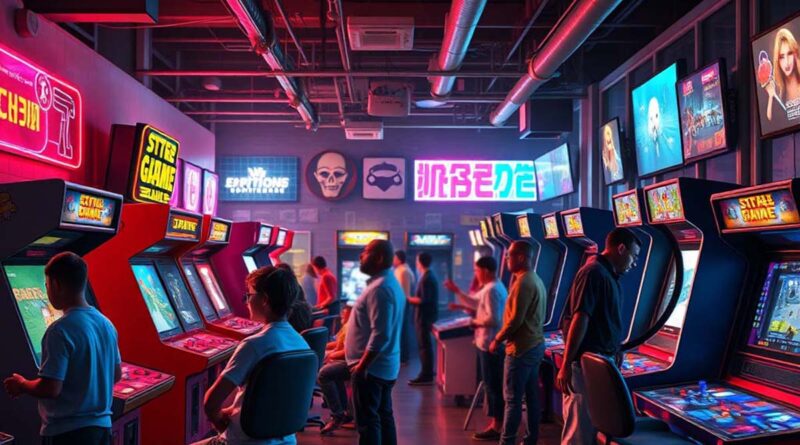The Evolution of Video Games: From Classic Arcades to Modern Day Consoles
Video games have evolved significantly since their inception in the 1970s. From the humble beginnings of arcade machines and early console games to the sophisticated, immersive experiences we enjoy today, the world of video games has undergone tremendous change. In this article, we will explore the evolution of video games, the impact of technological advancements, and how the gaming industry has shaped culture and entertainment worldwide.
The Early Days of Video Games
The first video games were simple and arcade-based, with titles like Pong and Space Invaders capturing the imagination of players in the 1970s. These early games relied on basic graphics and limited gameplay mechanics, but they laid the groundwork for the future of gaming. Arcade cabinets became a popular form of entertainment, and gaming quickly became a mainstream activity.
The Rise of Home Consoles
The 1980s saw the emergence of home video game consoles, allowing players to enjoy games in the comfort of their homes. The Atari 2600, released in 1977, became one of the first major home consoles, followed by Nintendo’s NES (Nintendo Entertainment System) in the 1980s. These systems helped push gaming into the mainstream, and titles like Super Mario Bros. and The Legend of Zelda defined the era.
Technological Advancements in Gaming
As technology improved, so did the quality of video games. The 1990s brought us 3D graphics and CD-ROMs, marking the shift to more sophisticated and graphically intense games. The Sony PlayStation and Nintendo 64 became iconic consoles during this time, introducing us to new franchises like Final Fantasy, Gran Turismo, and Super Mario 64.
In the 2000s, the introduction of high-definition graphics, online multiplayer, and motion-sensing technology took gaming to new heights. The PlayStation 3 and Xbox 360 provided enhanced visual experiences and online connectivity, leading to an explosion of social gaming.
The Current State of Gaming
Today, video games have become more than just a pastime—they are a form of social interaction, professional competition, and art. Modern gaming platforms like the PlayStation 5, Xbox Series X, and PC gaming offer ultra-realistic graphics, vast open-world games, and online multiplayer features that enable players to connect globally.
The rise of virtual reality (VR) and augmented reality (AR) has further transformed gaming, allowing players to experience new forms of interactive entertainment. Additionally, mobile gaming has brought gaming to an even larger audience, with millions of players enjoying games on their smartphones and tablets.
Gaming and Culture
Gaming has become deeply integrated into modern culture. Video games now have their own dedicated communities, streaming platforms, and competitive leagues. The rise of eSports has turned gaming into a professional sport, with players and teams competing for millions of dollars in prize money. Events like E3 and Gamescom have become major cultural touchstones, showcasing the latest and greatest in gaming.
Conclusion
From its humble beginnings in arcades to the immersive, high-tech experiences of today, video gaming has undergone a remarkable evolution. Technology has played a significant role in shaping the industry, and video games continue to be an essential part of entertainment and culture worldwide. As new advancements like virtual reality, cloud gaming, and artificial intelligence continue to emerge, the future of gaming is filled with exciting possibilities.

